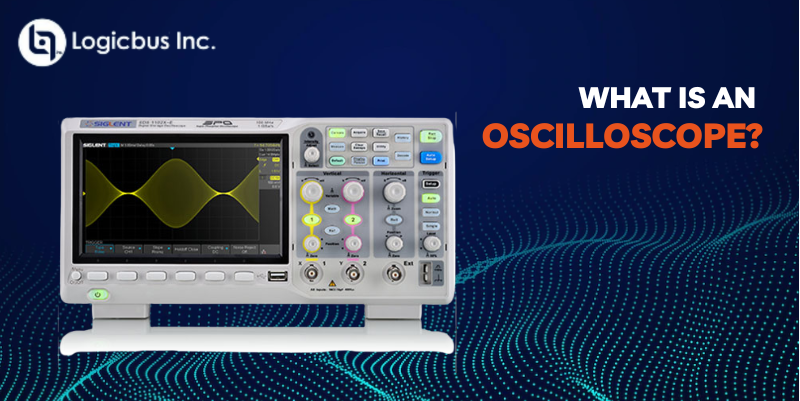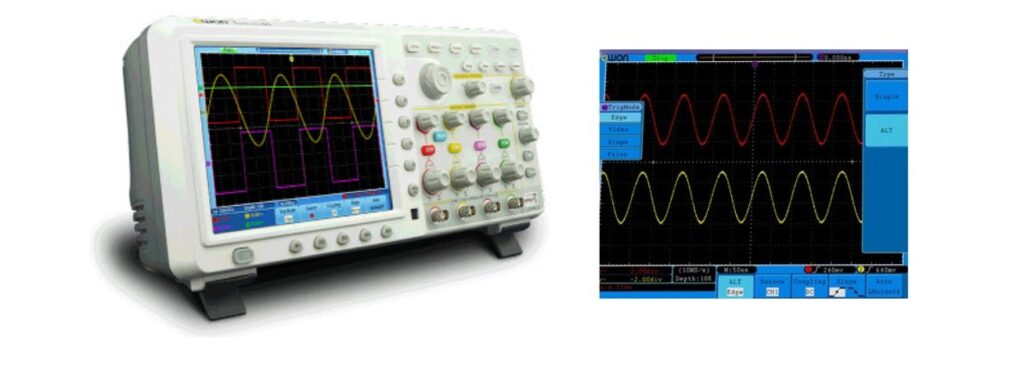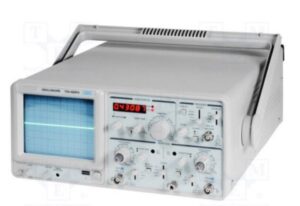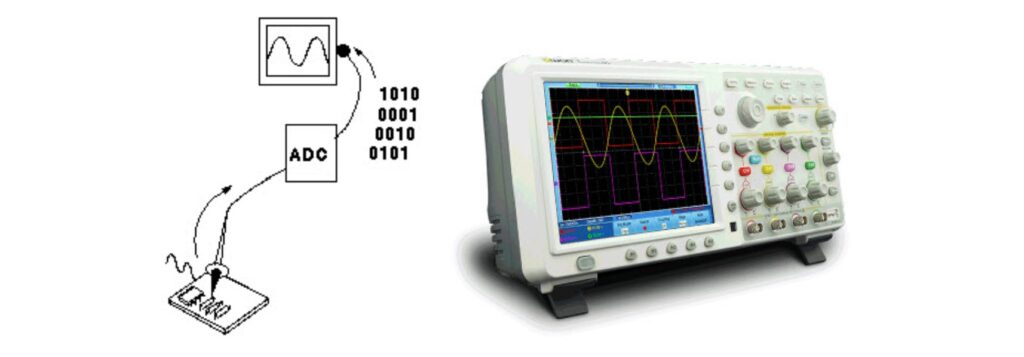An oscilloscope is an electrical measuring instrument in which the magnitude of an electrical signal is plotted against time. The oscilloscope display consists of 2 axes, the X (horizontal) representing time, and the Y (vertical) axis representing voltage. They are used mainly to visualize transient phenomena as well as waveforms in electrical and electronic circuits.
How is an oscilloscope important?
It is unarguably the most important tool on most Engineer’s bench. It allows a view of voltage vs. time for one or more synchronized channels. It would be hard to get an accurate view of what is happening in the time span without one. The plot can be triggered with combinations of complex signals to see the relationship of the signals plotted vs. the trigger event.
Examples:
-
Electronics in general, mostly air conditioners, lights, and Televisions. These types of electronics use the oscilloscope to verify the signal that the different components of the electronic devices give him since the waves found from the different points of the circuits are well defined, and through their analysis, we can easily diagnose what are the performance problems.
How many types of oscilloscopes exist?
They exist two types of oscilloscopes the analog oscilloscope, digital oscilloscope, and virtual oscilloscopes.
Analog oscilloscope
The earliest and most basic oscilloscopes are analog oscilloscopes. In this type of oscilloscope, its operation is based on the possibility of deflecting an electron beam through the creation of electric and magnetic fields. Its operation is very simple, but with certain limitations inherent to its operation:
-
The signals must be periodic.
-
Very fast signals reduce brightness.
-
Slow signals do not form a trace.
-
You can only see transients if they are repetitive.
Digital oscilloscope
Nowadays analog oscilloscopes are being largely displaced by digital oscilloscopes, one of the main problems to overcome was the conversion speed since it is recommended to digitize a signal at a frequency 10 times more than that required to measure, this is if we have a 20MHz signal, we must have a team capable of obtaining data at 200M samples per second Digital oscilloscopes also provide certain advantages over analogs:
-
Automatic measurement of the signal peak
-
Maximum and minimum values.
-
True effective value.
-
Measurement of signal edges and other intervals.
-
The capture of transients.
-
Advanced calculations, such as FFT to calculate the spectrum of the signal. it is also used to measure voltage signals.
Popular models of digital oscilloscope
- SDS1000DL+ Series
- SDS1000CML+ Series
- SDS1000X-E Series
- SDS1000X-U Series
- SDS1000X-X+ Series
- SDS2000X Series
- SDS2000X-E Series
- SDS2000X Plus Series
- SDS5000X Series
Virtual oscilloscope
Another option is digital oscilloscopes. The advantage of these oscilloscopes is that are portable, small in size, and does not have a PC screen not requiring an external power supply. Instead, they use the PC screen of your computer and they are connected with a USB type of entry and we can find models from one channel to 8 channels. The one-channel ones are basically the tip with a USB connection. They are high-speed data acquisition cards, which work the same as an oscilloscope.
Conclusion
In this blog, we talked about than an oscilloscope is an electrical measuring instrument in which the magnitude of an electrical signal is plotted against time. We also discussed the different types of oscilloscopes that they exist. The analogic oscilloscope, digital oscilloscope, and virtual oscilloscope.
Visit our website:
https://www.logicbus.com/oscilloscopes.html
Contact us




sales@logicbus.com | support@logicbus.com | +1 619 616 7350 | Start conversation





